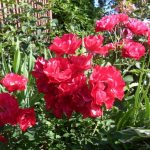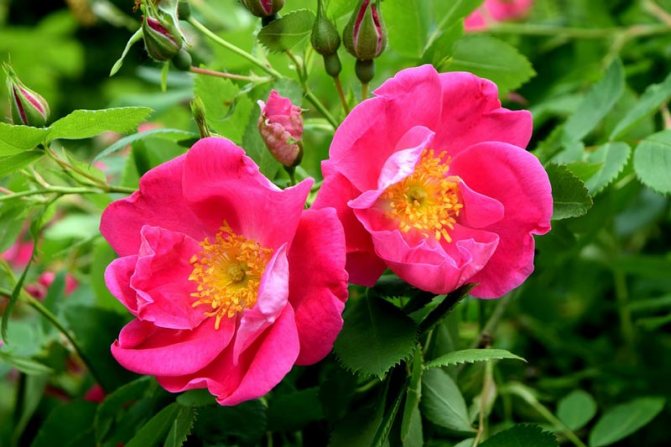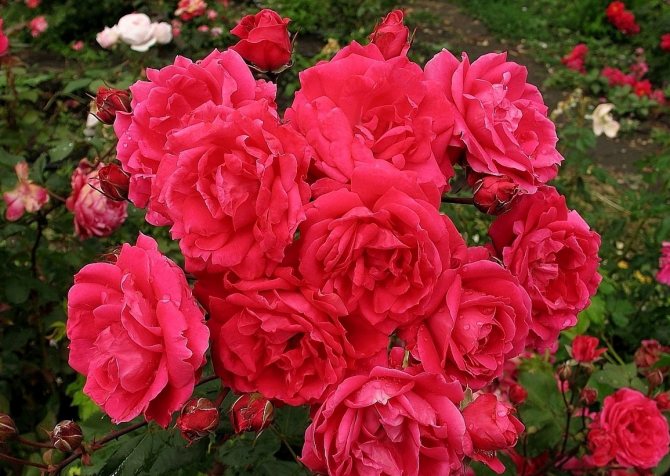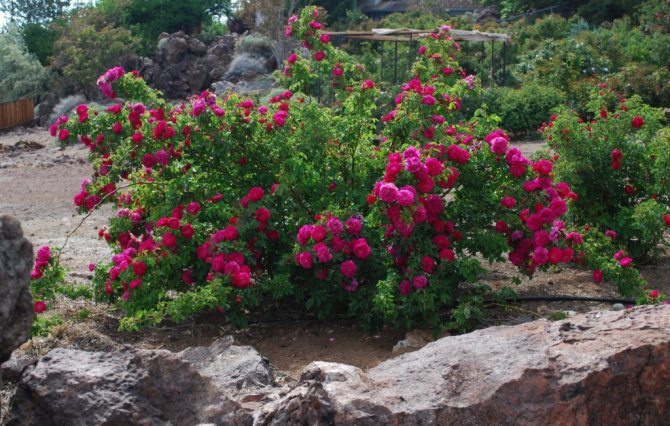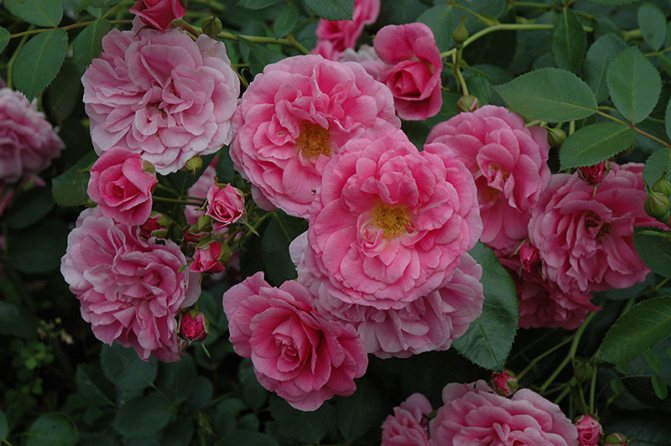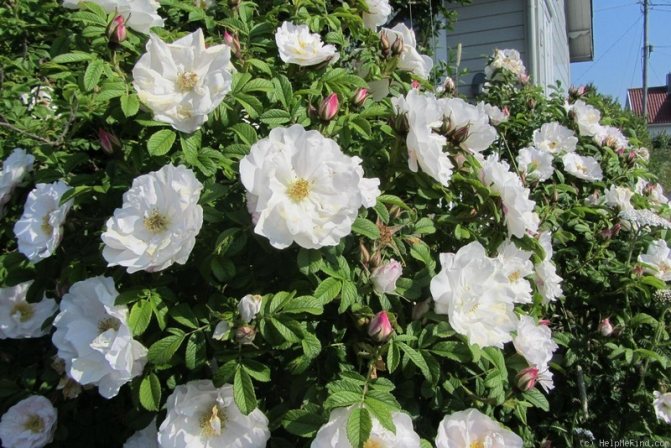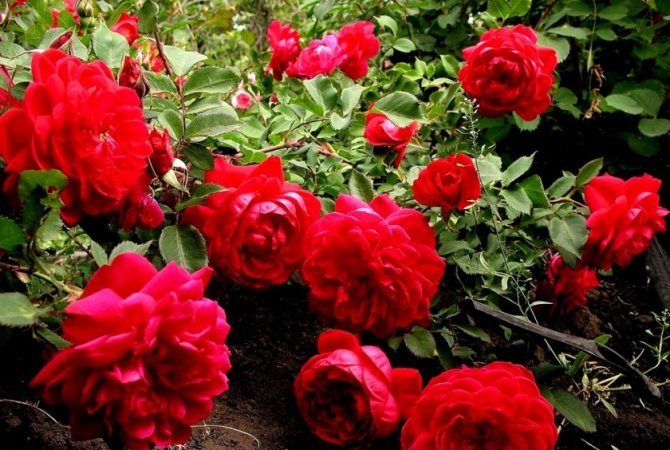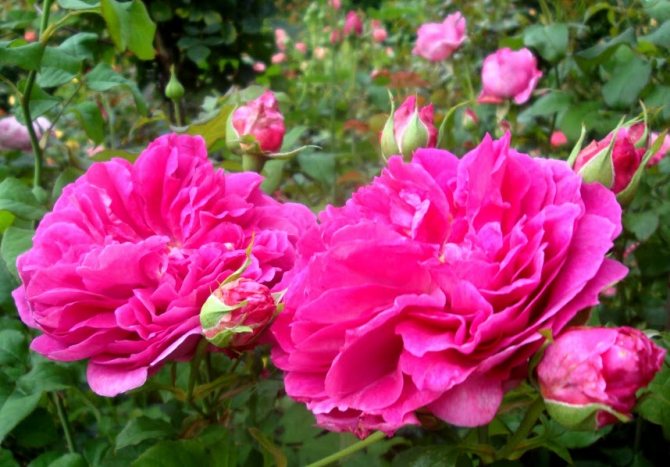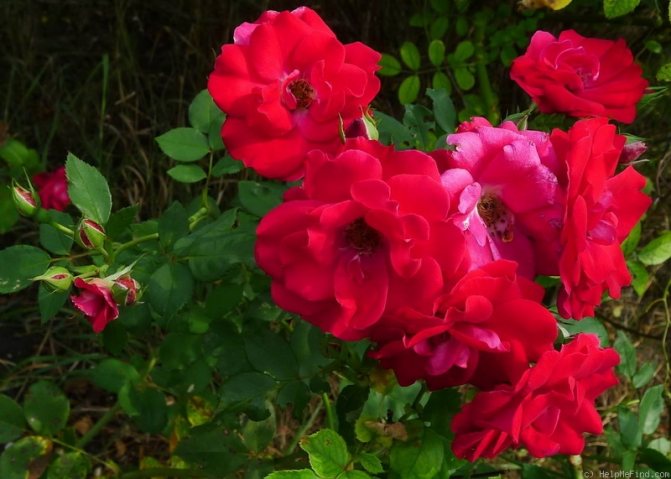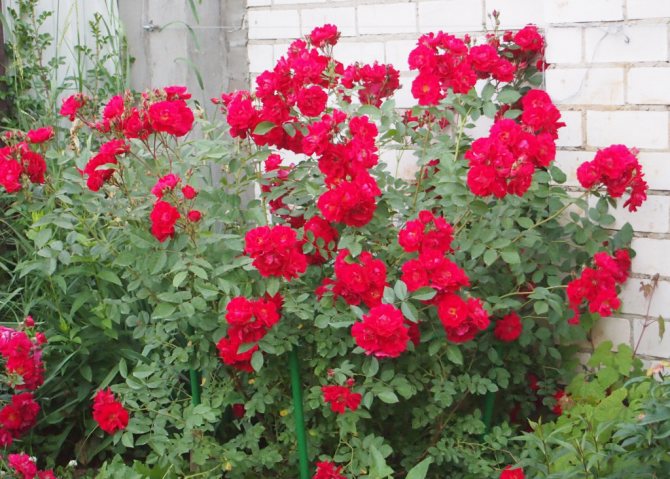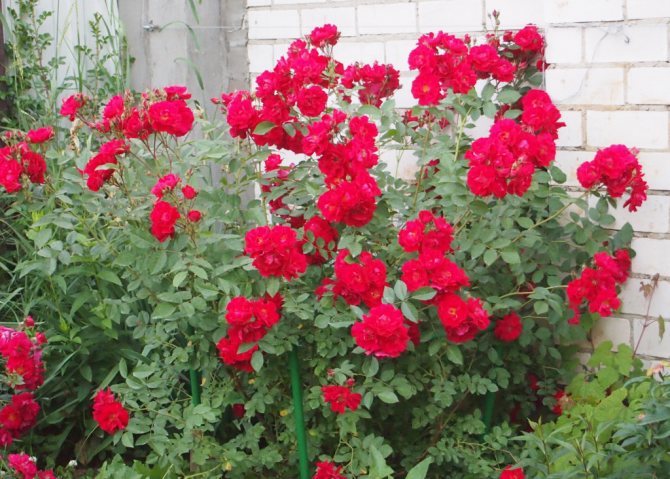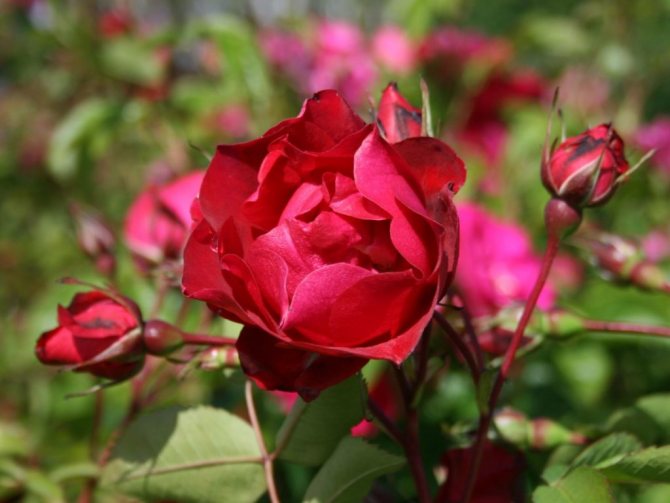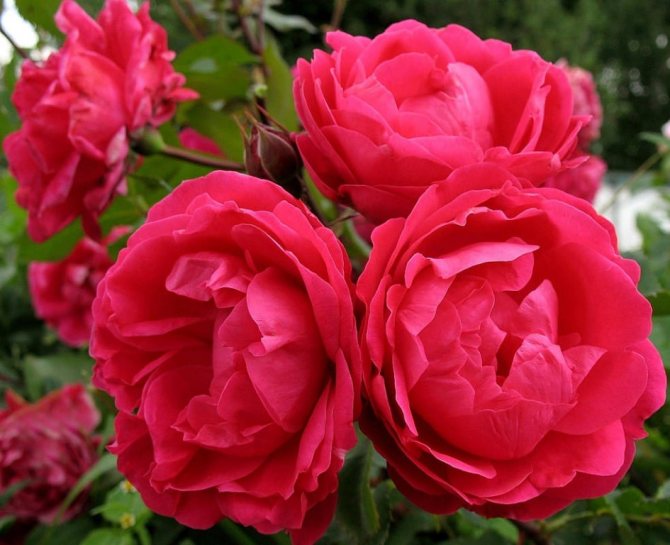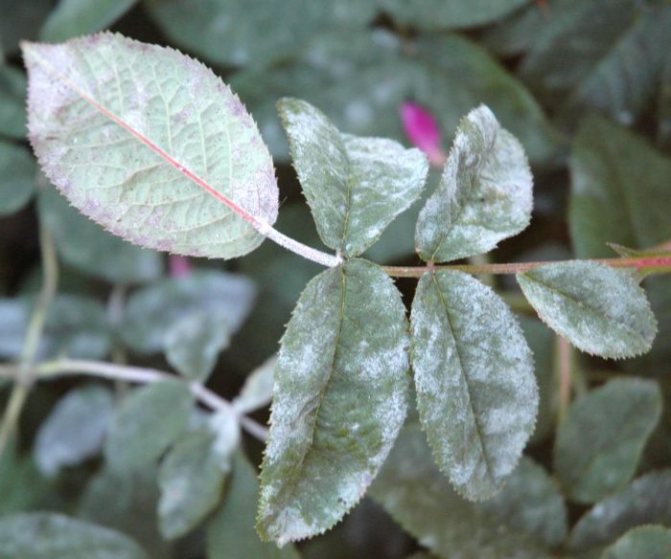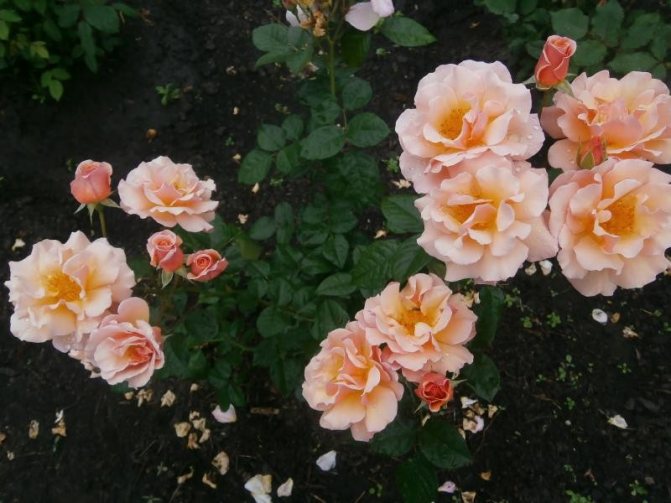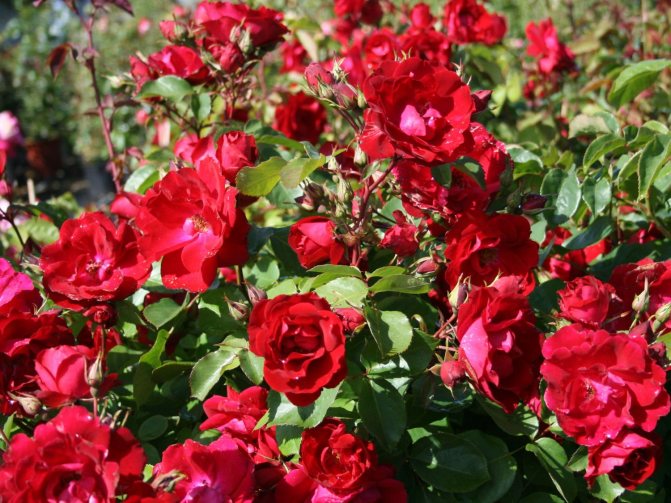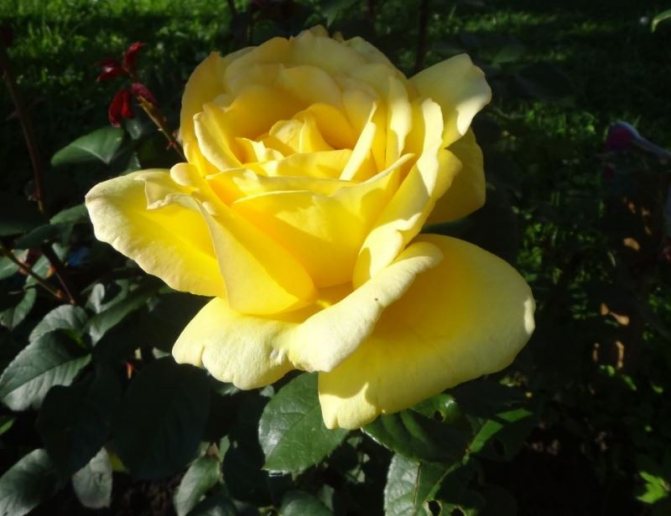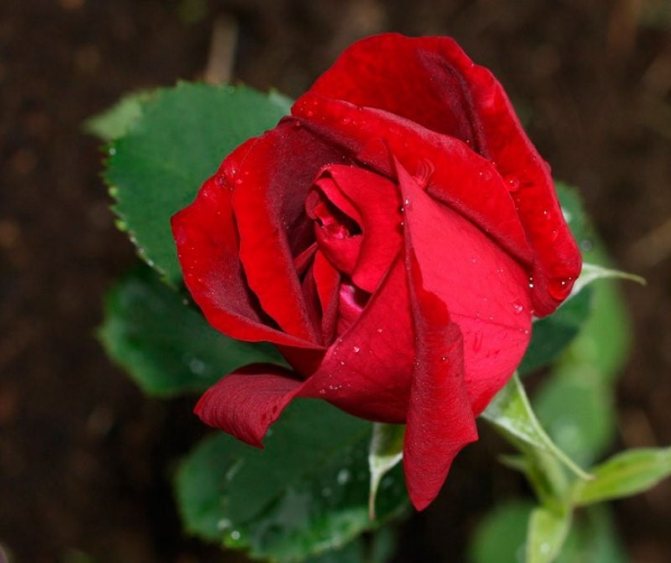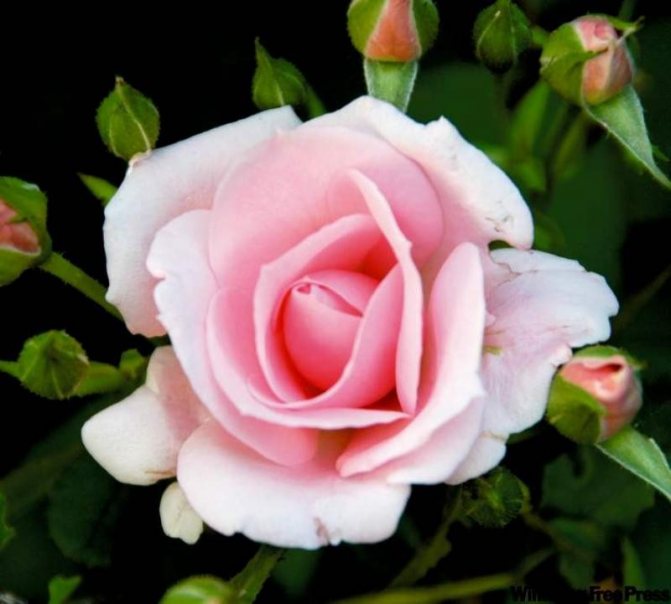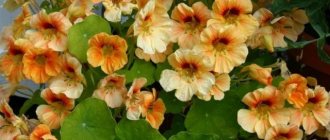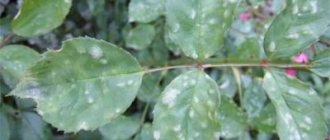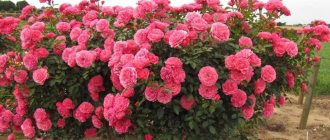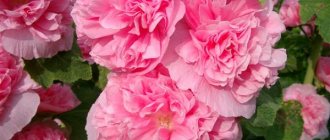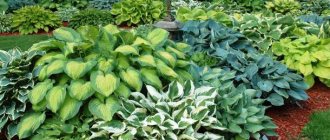Rose John Franklin, created by Canadian breeders, belongs to varieties that thrive in cold conditions. Although this flower does not have the highest rates of frost resistance, it has gained great popularity among gardeners in Russia. Rose John Franklin is used for landscape design, decoration of parks, summer cottages, single flower beds.
Description of the plant
This variety has already become widespread in our country. It is distinguished by a special beauty, the flowers are bright red. At the same time, the main attention is drawn to semi-double heads, on which delicate pointed petals are located, the number of which can number about 25 pieces. Due to this feature, rose John Franklin is often compared with cloves, but at the same time it has a characteristic delicate aroma, which is hardly perceptible under ordinary conditions. Some even attribute this to disadvantages, but connoisseurs of subtle notes and subtle smells of the Canadian rose John Franklin will certainly like it.
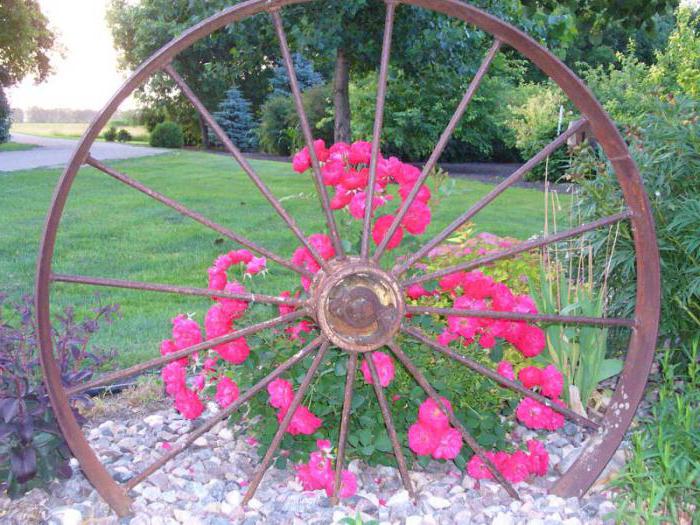
This variety forms flowers of three to seven pieces in one large cluster. The leaves are rounded and rich in green. At the same time, a healthy glossy shine is characteristic. The bush itself is erect and quite dense. Flowering almost never stops during the season, flowers are constantly replacing each other. Rose John Franklin park has a head diameter of about six centimeters.
Florist reviews
Hope
My favorite rose "Alexander Mackenzie" blooms all summer until the very frost. True, after the first wave it is less abundant, but without flowers it is never worth it. Unlike other "Canadians" this variety tolerates the rainy season without any problems. It hibernates under a common shelter with other roses (a lutrasil cloth thrown on top in one layer). In the spring, I cut out single dry branches and slightly adjust the shape of the bush.
Mikhalna
I have only one rose of "Canadian" selection - Alexander Mackenzie. The first couple of years did not cover, the result - froze to the height of the snow cover. I cover the last three winters: I cant it and put lutrasil on top. It hibernates perfectly, to the tips of the shoots. As a result - a bush of almost 2 meters, as stated. If you do not cover it, you will not be able to grow a tall and lush bush in the conditions of the Moscow region. My IMHO - if you need a tall and lush bush, the Canadians in our strip need to be covered.
Disease resistance
The rose is quite resistant to environmental influences and typical diseases. The plant does not require a special winter shelter, hilling and a thick layer of snow are enough for it. If the temperature in winter in your area drops below -40 ° C, then the shoots may freeze to the line of the snow cover. Recovery takes place quite quickly, new cuttings will surely grow from the root.
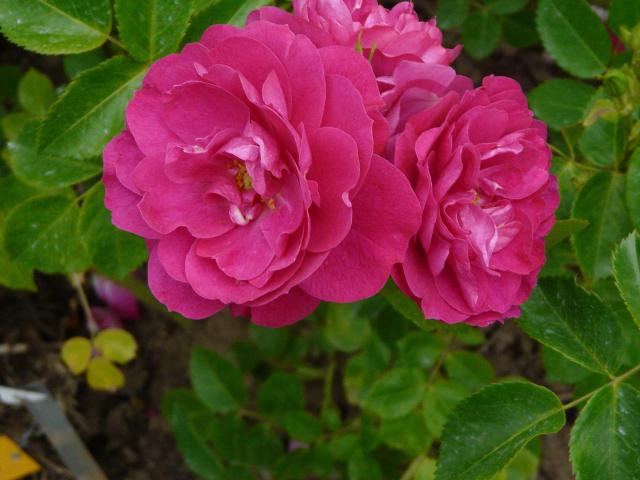

Rose John Franklin, reviews of which for several years have provided an opportunity to judge the advantages and disadvantages of the variety, has an average resistance to powdery mildew disease. Although initially breeders declared a fairly high resistance to various pests and diseases, the practice of gardeners and their reviews indicated that this level reaches an average and in some cases exceeds it.
Why roses don't bloom
- Incorrect cropping. Only old branches and wild growth should be removed.If you over-shorten or cut off young shoots, the rose will stop blooming.
- Improper preparation for winter. At the end of summer, you need to stop feeding with nitrogen, loosening the soil and reduce watering, at the end of autumn - remove leaves, damaged and weak shoots. It is necessary to leave an air gap between the rose and the shelter.
- Landing in an area with inappropriate lighting... If the rose does not have enough sunlight, this can affect the formation of the buds. Excess sun, especially direct sunlight at midday, can also wreak havoc and affect flowering.
- Wild growth. Wild shoots growing at the base must be removed in time so that the rose does not go wild.
- Improper feeding. When fertilizing plants, you must follow the instructions. You also need to know at what time of the year it is correct to apply certain fertilizers.
- Diseases and pests. If the plant is affected by some kind of disease or pest, it may not bloom. Therefore, you should familiarize yourself with the symptoms of possible diseases in advance in order to identify the problem in time and begin to fight it.
- Weakened seedlings. If the seedlings turned out to be of poor quality, then they will not take root well, require special care and will not bloom. Purchase seedlings from trusted sellers and reputable stores.
- Tight fit. When planted tightly, roses may lack nutrients, which cannot but affect flowering.
- Unsuitable soil... If the soil lacks the nutrients the plant needs, it will weaken and stop blooming. In this case, fertilizer should be applied to the soil.
Reproduction methods
Rose John Franklin, whose photo can be seen in this article, is capable of propagating both by grafts and cuttings. In the second method, strong roots are formed very quickly, so that the plant is not afraid of the cold. Seedlings are planted in the ground for the winter, sprinkling it with soil 20-25 cm at the very base of the bush. The survival rate for the first breeding method is quite high. Which one you prefer does not really matter, and it depends primarily on the skills and abilities you have.
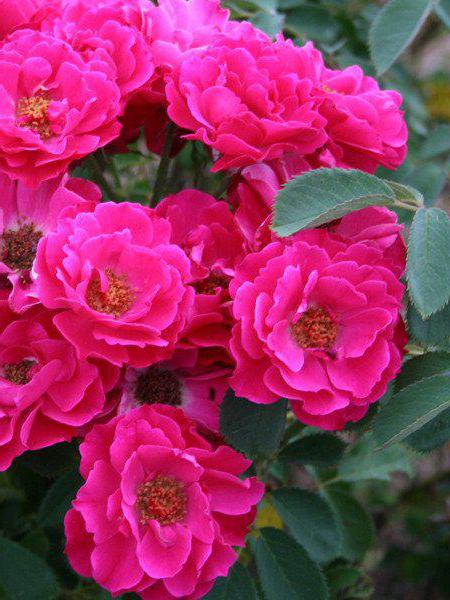

Canadian roses and their benefits
The advantage of the culture, in addition to frost resistance, is its graceful appearance. The bushes have fluffy large flowers of different shades, rich dense leaves, stems with a small number of thorns.
The main advantages of Canadians:
- winter hardiness and endurance;
- attractive appearance;
- wide palette of flower shades;
- quick recovery from frostbite;
- immunity to temperature extremes;
- beautiful and long-lasting flowering;
- non-susceptibility to diseases;
- interesting bush shape, rich foliage;
- easy ways of propagation by cuttings;
- popularity in landscape design.
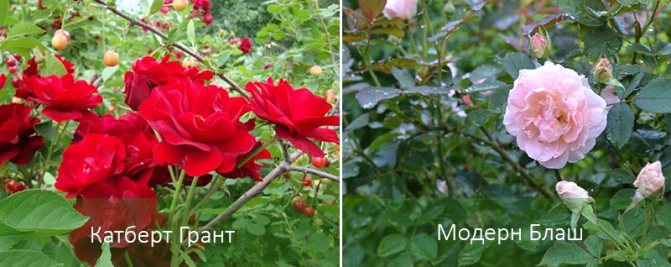

Canadians buy in pots, start selling in April. You can also order seedlings in specialized online stores.
Care Tips
Rose John Franklin does not require any special treatment. All the same recommendations can be applied to it as to other varieties of roses. You should definitely carry out regular feeding, to which the plant responds with gratitude. In the summer, as a rule, they perform sanitary pruning of the bush. For the winter, its base is covered with a compost layer or an earthen pillow is made for it. If the care is caring enough, then the flower will delight you with full-season flowering with rather large inflorescences.
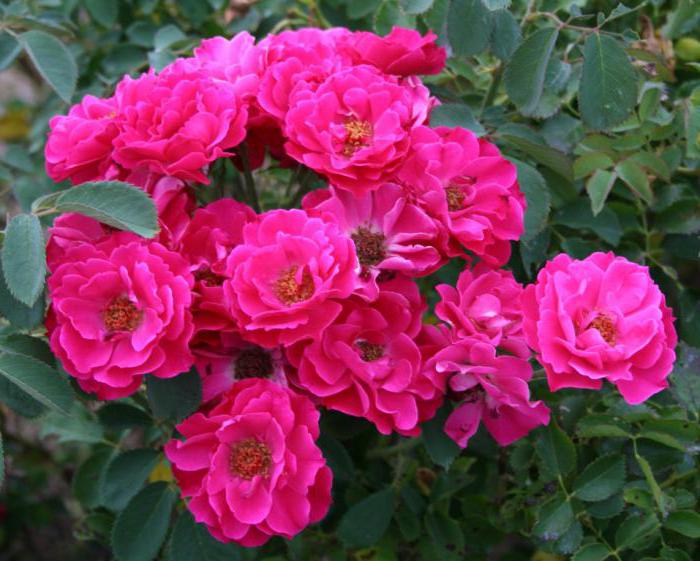

If the plant is young, then it should not be allowed to bloom very early. In the first season, it is better to remove the buds before the very beginning of August. In August, only a couple of inflorescences are left on the shoots and they give the opportunity to set fruit. In the next season, this bush will please with already abundant flowering.You can also make a formative pruning for your favorites in the spring, if you do not want to subsequently get a sprawling bush. But experts recommend doing anti-aging pruning only once every few years. This allows you to get rid of old lignified branches prone to flaking of the bark. You also need to periodically get rid of weak internal or ugly located and damaged shoots.
Classification of Canadian roses
Culture can be divided into two series:
- Parkland (Parkland). The buds have sophistication and a wide choice of colors, but lack aroma.
- Explorer (Explorer, translated "researcher"). The series acquired this name in memory of the researchers and discoverers of Canada. Charming fragrant flowers adorn densely branched and climbing shrubs.
Canadian roses Explorer series
The varieties are named after the explorers who conquered the north of the planet. Most of the plants in this group are hybrids, based on the Cordes flower.
It is worth highlighting 3 groups of the Explorer series:
- Park bush. These include: Champlain, Royal Edward, J.P. Connel, Alexander McKinsey, Frontenac, George Vancouver, Simon Fraser, Lewis Joliet, Lambert Closs.
- Mountain climbers. These are John Davis, Captain Samuel Holland, Henry Kilsey, William Bafin, John Cabot.
- Roguza.
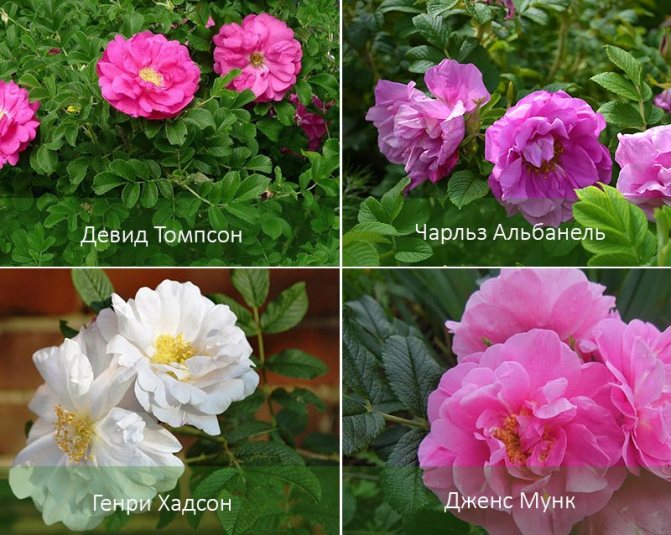

The most interesting are presented in the table (click on the flower photo to enlarge it):
| Variety | Description | Flowers | Height (m) |
| Henry Hudson
| Grown since 1966. Good immunity to diseases. Easily propagated by cuttings. Suitable for the formation of rounded flower beds. | White with red blotches. | Up to 0.5 and up to 1 in diameter. |
| David Thompson
| The year of opening is 1971. | Raspberry color. Bloom from summer to autumn. Volumetric, consisting of 25 petals. Fragrant. | About 1.3. |
| Jens Munch
| A large, spreading bush with a very strong stem and developed rhizome. | Pink, pleasantly smelling buds, up to 7 cm in diameter. | Almost 2. |
| Charles Albanel
| Nice compact ground cover, very hardy. | They grow modestly, from the beginning of summer until the first frost. | 1,5. |
| Martin Frobisher
| Unpretentious and undemanding, for this reason they are grown in gardens and parks, used in the construction of artificial fencing. | Light red. Volumetric multilobe. Not devoid of a bright saturated fragrance. | Approximately 2. |
Parkland series Canadian roses
Plants of this selection are very often grown in public parks and gardens due to their undemanding nature. It tolerates dry and rainy seasons. Any soil is suitable for growing, but to maintain a well-groomed appearance, it is necessary to feed. Designers use these roses to decorate a green hedge, so the protruding shoots are cut off. Propagate by dividing the bush and layering.
The most notable varieties are shown in the table (click on the flower photo to enlarge it).
| Variety | Description | Flowers | Height (m) |
| Adelaide Hoodless
| An attractive neat ground cover. | Dark pink and reddish color. | 1. |
| Prairie Joy
| With long shoots, it is actively used in garden design. The bush is fixed to a solid skeleton, forming living septa. | Light red. Blooms in summer. | Up to 1.8. |
| Winnipeg parks
| It has green leaves with a reddish sheen. | Dark red or crimson. Vanilla fragrance. | No more than 0.5. |
| Prairie Celebration
| Good immunity to various diseases. The illumination of the site does not affect the development, it grows quietly in the shade. | Bright pink color. Blooms throughout the summer. | Up to 1. |
| Hope of Humanity
| Released in 1996. The most frost-resistant species in the Parkland series. Low neat bush. | Dark red flowers. The inflorescences consist of 5 fluffy buds. They bloom all season and have a slight odor. | About 1.5. |
| Cuthbert Grant
| Popular variety.Smooth shrub with strong shoots. | Velvety, deep red, pleasantly smelling. | Approximately 1. |
The following plants of the Morden group can be attributed to the Parkland series: Rosa Louise Bugnet, Ruby / Ruby, Amorett / Amorette, Centennial, Cardinette, Sunrise, Blush, Fireglow, Belle, Snowbeauty.
Canadian artists - a new young series, born in 2007, owned by her: Felix Leclerc, Emily Carr, Campfire, Bill Reid.
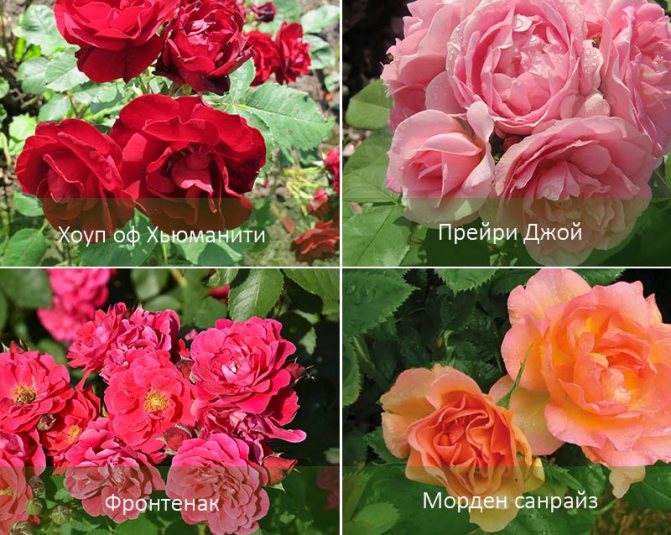

Tips for using varieties in landscaping
Since the John Franklin rose is a park rose, it will look great in group plantings. It can be combined both with green spaces (thuja, cochia, etc.) and with other types of flowers. At the same time, a rose is a long-term basis for a flower garden, and it is from it that one should start from further combination.
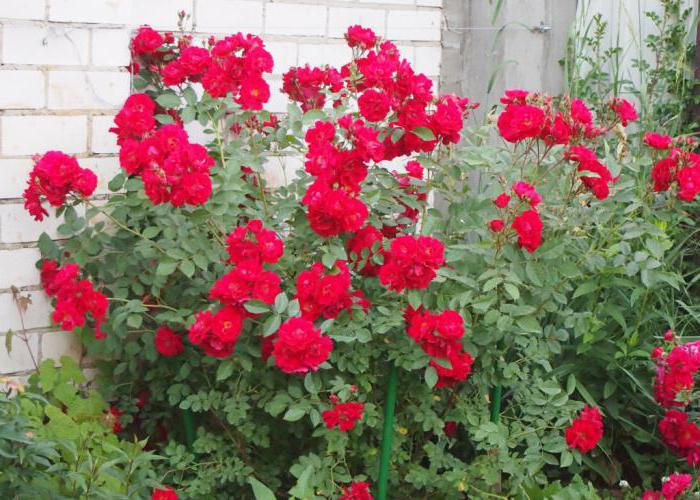

With the help of this variety of roses, you can perfectly decorate your French garden, Victorian landscape, country. Rose John Franklin will look great in a single planting in the middle of a green lawn, as well as in a mixborder design. How and where you decide to place it is only a matter of your imagination and capabilities. We can only say with confidence that the rose is the real queen of your garden, and the Canadian rose, no doubt, deserves a central place in your flower garden.
Things to Remember
- Variety: Canadian park rose Alexander Mackenzie.
- Planting and care rules: selection of a site, preparation of holes, providing a nutritious soil mixture, regular watering, balanced feeding, correct pruning, regular inspection.
- Diseases and pests: black spot, powdery mildew, bacterial cancer, rust, chlorosis, spider mites.
- Causes of poor growth and flowering: diseases and pests, weakened seedlings, inappropriate lighting, wild growth, radical pruning, improper feeding, improper winter preparation, dense planting.
Wrinkled rose hybrids
Wrinkled rose varieties, including those of Canadian selection, have a very beautiful bush shape. They can be safely used to create borders, hedges, plant in the center of large (more than 5 m in diameter) flower beds or in the background of mixborders. Beautiful foliage even in the lower part of the bush distinguishes them favorably from hybrid tea roses, varieties of the grandiflora and floribunda groups. To achieve continuous flowering, try to continually trim off faded buds. Between pruning of inflorescences and flowering in different varieties, it takes from two to three weeks.
Popular varieties of wrinkled rose
Rose variety Henry Hudson (1976)
Bright compact variety. During flowering, the whole is covered with white-pink flowers with a slight odor. It blooms almost without interruption. Ideal for hedges and group plantings.
Rose Martin Frobisher (1968)
Spreading bush, but erect shoots. In the landscape, it is used to create curtains that set off evergreen hedges of thuja and junipers. Flowering is constant, delicate pink flowers have a very light aroma.
Photo gallery of varieties of Canadian roses >>>
Blooming rose
Rose Aloha
The flower buds are painted with a crimson-red palette. Petals are slightly pointed, double: outwardly, John Franklin's flowers are similar to a garden carnation. Flowering is profuse and long lasting.
A period of activity and rest
The buds begin to open in April: Canadian-bred roses are among the first to bloom. Flowers bloom gradually and stay on the bush for about 2 weeks. In the summer, a short period of dormancy begins, after which flowering resumes.
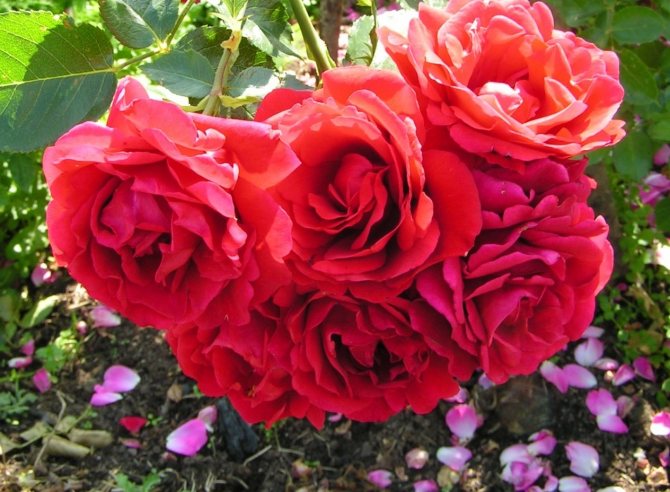

A flower brush can be made up of 25-30 flowers
Care during and after flowering
If the weather is hot, the plants are watered at least 1 time per week. The next day, the soil is loosened to prevent the formation of a dry crust.
Weeds continue to be removed around the bushes. After flowering, the land is fed with a complex mineral fertilizer.
What to do if it does not bloom, possible reasons
In order for a rose to bloom profusely and for a long time, you need to correctly perform agricultural techniques. The following factors can lead to problems with flowering:
- prolonged drought;
- cultivation in depleted soil;
- damage by diseases and pests;
- young age;
- planting bushes in the shade.
Having corrected the mistakes of care, the gardener will again admire the abundant flowering of the rose.
History of creation
This variety was bred and introduced on the instructions of the Department of Agriculture of Canada, at the Central Experimental Farm in the province of Ontario, in 1985. The variety is named in honor of an outstanding person, natural scientist, Scottish by nationality, who, as it is believed, in the second quarter of the 18th century, was the first to cross all of North America from the Atlantic to the Pacific Ocean. Before that, he still managed to visit the entire Pacific coast of British Columbia, studying the flora of these places.
Such well-known roses as Queen Elizabeth, Red Dawn and Suzanne took part in the creation of the variety.
Shelter roses for the winter
Many are worried about the insulation of bushes before winter. It all depends on the region.
In central Russia, young seedlings are covered with a layer of earth by 15-20 cm. In subsequent years, the base of the bush is spud if the climatic zone is 4-5, 2.3 - without shelter.
In the Trans-Urals and the Urals (zone 3), young plantings are protected with non-woven material. Subsequent years do not shelter in snowy winters. If zone 2 is an earthen shelter.
In Siberia (zone 2.3), when it snows before frost, shelter is not needed. If there is no snow cover, an earthen shelter or non-woven fabric.
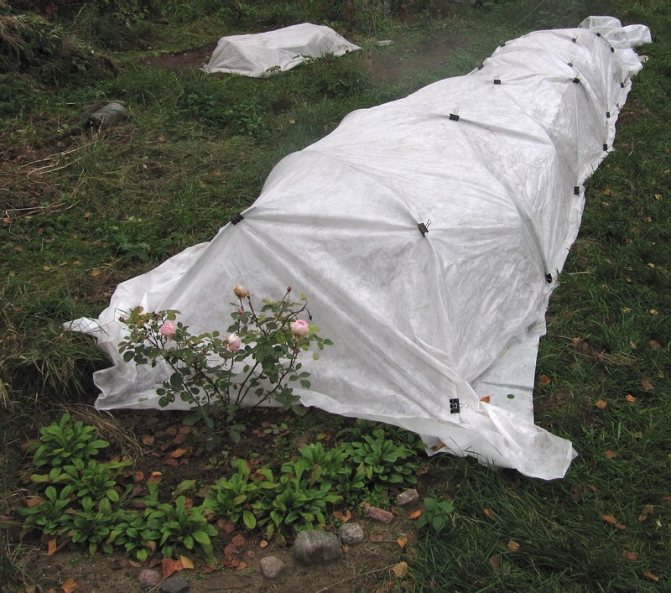

How to plant?
If you nevertheless decide that a Canadian rose is simply necessary on your site, then you need to find a comfortable place for it. A warm and sunny corner with good ventilation and light, preferably neutral, well-drained soil is suitable for this plant. You should not place the flower where the sun shines from morning to sunset. Still, "Canadians" are northern flowers, and they are clearly not shown an excess of ultraviolet radiation. Planting holes for Canadian rose seedlings are prepared in advance, necessarily filling with complex phosphorus-potassium fertilizers and only well-rotted, last year's organic matter: compost, humus or mullein. The grafted seedlings are planted in the prepared holes so that the budding site is located slightly above the soil.
Popular varieties of canadian rose
The first Canadian park culture to be bred is Martin Frobisher. In addition to the best characteristics among all varieties of frost-resistant roses, it is appreciated for its delicate aroma and delicate pale pink shade of inflorescences. Differs in oval dark green leaves and almost smooth stems without thorns. When the necessary conditions are created, long and abundant flowering can be observed, lasting until the cold weather.
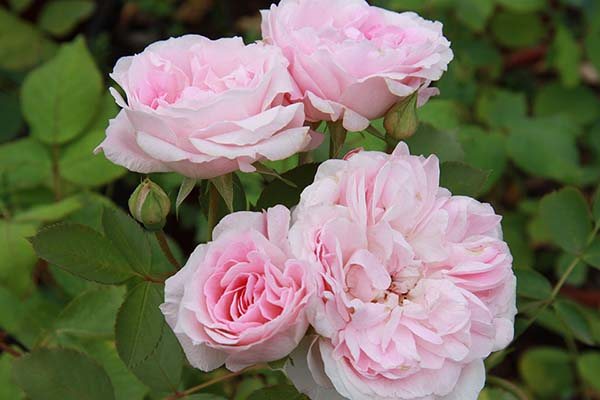

Canadian roses variety Morden Blush
Park roses "Moden Blush" are the most blooming. They are low bushes no more than 75 cm high. They have erect stems with dark green leaves, over which pale pink inflorescences rise. When grown in the southern regions, "Moden Blush" can reach a height of 2 m. Unlike most Canadian park varieties, it can freeze slightly, and therefore requires mandatory warming in winter.
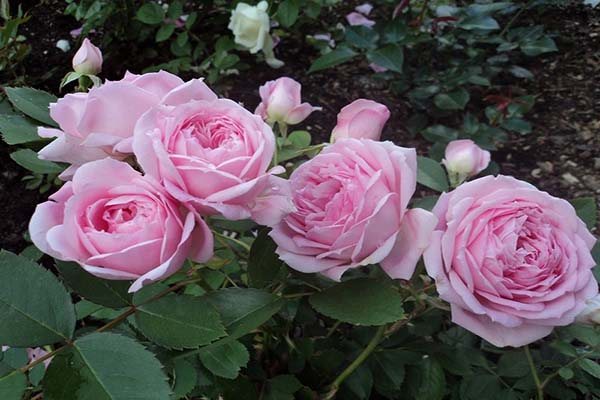

Rose Canadian park grade "Praie Joy"
When creating hedges, it is recommended to use the Prairi Joy park variety, which is a bush up to 1.5 m high and up to 1.2 m wide. It is distinguished by large inflorescences of a rich pink tone with rare or thick double petals. On each stem of "Prairie Joy" up to 6 buds are formed, which, when opened, incline the shoots to the ground. Under the influence of low temperatures, less intensive development of the bush and a decrease in height to 1 m can be observed.To protect the plant from frost, it is imperative to spud and insulate it before the onset of cold weather.
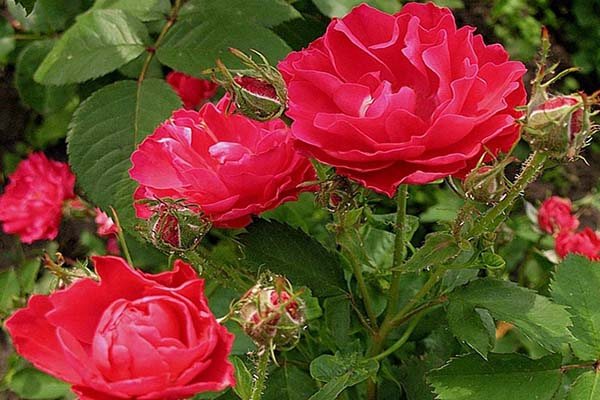

Rose Canadian park variety "John Franklin"
The original representative of the Canadian park selection is John Franklin. Differs in dense pink-red inflorescences with pointed petals, located on stems up to 1.5 m high. Similarly to the previous variety, it is often used to create living walls. In order for "John Franklin" to decorate the site with flowers throughout the summer, it should be planted in areas abundantly watered by the sun.
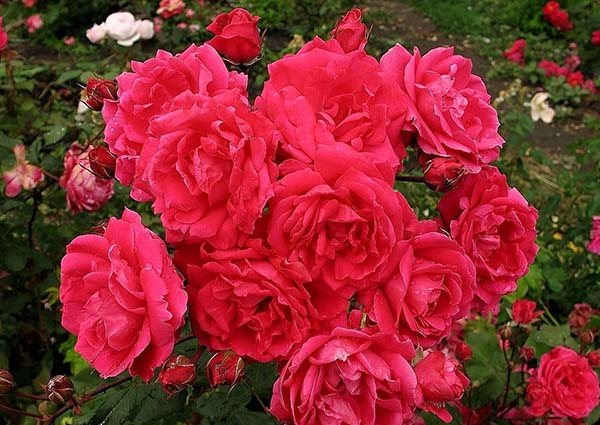

Canadian park rose variety Alexander Mackenzie
The roses "Alexander Mackenzie" are distinguished by the highest height, the stems of which can reach 2 m. They are distinguished by dense inflorescences of rich red color with a delicate aroma similar to strawberries. Flowering occurs in waves, between which one can observe a single formation of buds. "Alexander Mackenzie" is often affected by powdery mildew and black spot. To prevent damage to the plant, prophylactic treatment of shoots with fungicides or copper sulfate should be carried out.
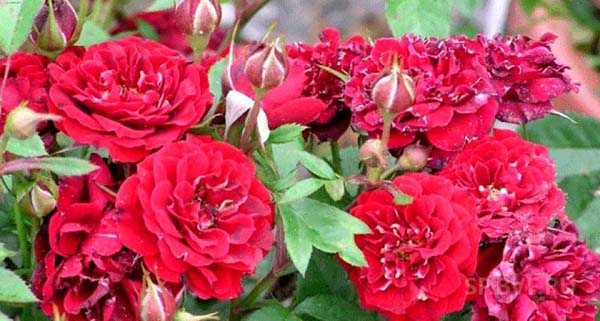

Rose Canadian park variety "Moden Fayrglou"
Park roses "Moden Fireglow" are used to create low-growing flower beds. They look like lush bushes with dark green leaves and orange-red inflorescences. They are characterized by a single abundant flowering, after which only a few buds can be observed. The Canadian variety "Moden Fireglow" is distinguished by its photophilousness and the ability to grow in sandy soil. Similar to the previous variety, the flower is at high risk of being affected by powdery mildew, and therefore requires preventive treatment with sanitizing drugs.
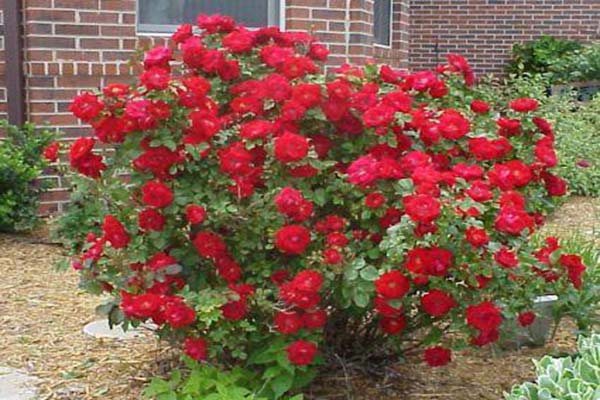

Canadian roses variety Champlain
To create a garden blooming throughout the warm season, the Canadian variety "Champlain" is used. The formation and opening of the buds of these flowers stops only with the onset of cold weather. During the period of abundant flowering, the branches of the plant tend to the ground. In the hot season, the petals of the flower open up, showing yellow stamens. When grown in conditions of excessive humidity and low average annual temperatures, "Champlain" is often exposed to black spot, which requires prophylactic treatment with drugs.
It is interesting Unpretentious and beautiful - Canadian roses
How to create a Canadian rose hedge
Growing the queen of flowers, you can not only create magnificent garden compositions, but also decorate your backyard with a living fence that blooms and spreads a pleasant aroma.
To create it, you can use purchased two summer rose bushes, but there is a more economical way - pruning and planting cuttings:
- The first step is pruning healthy, powerful shoots up to 30 cm long. They should be annual, never old. As with breeding these plants, it is necessary to remove all leaves except the top two.
- A recess for landing is being prepared. A trench is dug along the line of the planned fence (if adult bushes sit, its depth should be about 70 cm), where good soil mixed with sand and peat is added.
- Cuttings deepen to 1 leaf plate, sit at an angle. Unlike a conventional planting, the distance between them is up to 40 cm, this largely depends on the variety, how much it can give an increase, the width of the bush and its height.
- A shelter is made of plastic containers and huddled additionally with dry straw or hay. This is necessary to protect young shoots that are not yet sufficiently rooted from the sun and cold in winter.
The next year, the hedge is almost ready. Young bushes release rather long and strong shoots, and their final formation should already begin. The fence will take on its proper form in the second year after planting the cuttings.
Diseases, pests and ways to control them
The most common pest is aphids. It sucks out cell juice, weakening the plantings. Rose bushes can also infect mites, thrips. They get rid of harmful insects by applying insecticides.
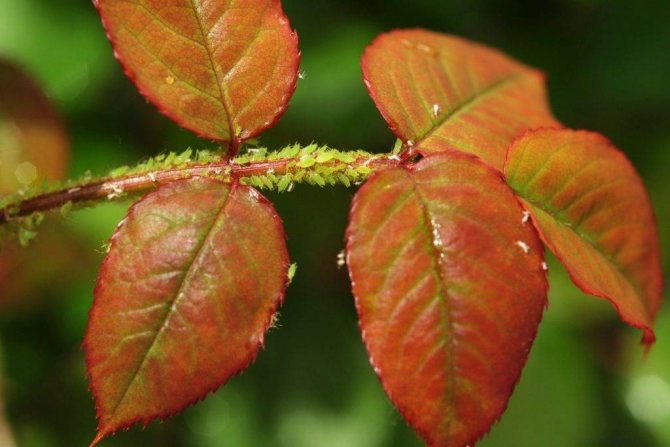

The main pest of roses is aphids
With improper care, plants can be affected by fungal diseases. To prevent their appearance, roses are sprayed with copper-containing preparations several times per season.
Park roses are very popular for their hardiness. John Franklin is one of the most beautiful varieties of the crop. It is unpretentious, hardy, blooms profusely and for a long time. With good care, the bushes delight with flowering from spring to late autumn.
Reproduction
The optimal way of breeding "Canadian" will be reproduction with the help of cuttings of the plant. Next to an adult rose, you should dig a groove into which the middle of the stem is lowered. Caution: The stem should not be cut off from the mother plant. It is pressed with a wire.
Popular: Varieties of rose scrub varieties with care and pruning
In the place where the stem touches the ground, an additional incision should be made in the bark to make it easier for the stem to form roots. After this, the layers must be sprinkled with earth. Above, with uncovered soil, only foliage and a couple of buds remain.
Parkland Series
This group includes the following, compact and low, outwardly very similar to floribundas (Canadian park roses), varieties:
- Cuthbert Grant.
- Morden Ruby.
- Adelaide Hoodless.
- Morden Cardinette.
- Rheinaupark.
- Morden Amorette.
- Morden Centennial.
- Hope for Humanity.
- Morden Blush.
- Morden Fireglow.
- Winnipeg Parks.
- Prairie Joy.
- Morden Snowbeauty.
- Morden Sunrise.
- Prairie Celebration.
- Morden Belle.
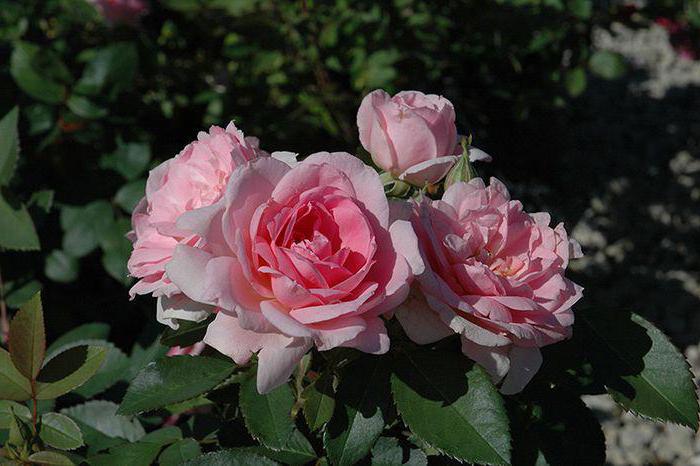

Features of agricultural technology
Like all roses of her “native” group, Alexander Mackenzie is distinguished by unpretentiousness and increased resistance to disease.
Interesting! In 1998, in Montreal, a kind of "competition" among roses was held in terms of resistance to the main diseases of the species. Our heroine showed excellent results, entering the top three, showing an infection rate of no more than 5%.
The frost resistance of this variety, according to the US Department of Agriculture (USDA), corresponds to the 4th zone. The rose can withstand up to -25 ° without cover, and up to -40 ° with light cover.
The plant is quite demanding on the quality of the soil, and this can be called its relative disadvantage. They should be rich in humus, constantly loosen well and be saturated with air. The place of growth should be well drained, it needs at least several hours a day to be illuminated by direct sunlight.
How to plant roses
The best planting option is autumn. Choose planting material with long legs. Shoots are freed from leaves, except for the top two. The root is trimmed, freed from diseased and damaged elements.
Dig a hole in the ground measuring 70x70x70 cm, cover with humus, complex fertilizers, wood ash, peat in equal parts. The soil should be fertile, non-acidic. The grafted bush is buried 5-9 cm into the ground. This will make it possible to develop a strong root system. Pour 18-20 cm of earthen mixture mixed with sand on the base of the seedling in order to keep the young bush from frost.
Classification
As already mentioned, breeding work to create hardy, frost-resistant and unpretentious roses was carried out at two scientific stations. In Ottawa, there was a group led by Dr. Felicia Swayzi crossing German Cordes roses with rugosa. As a result of their many years of efforts, the Explorer series was created, which got its name in honor of the conquerors and pioneers of the North. Canadian roses of this group are extremely winter-hardy, resistant to most diseases and delight with their abundant flowering. Another government research station based in Morden, South Manitoba, based on R.arkansana has created a series of Parkland cultivars, whose names include the word Morden. These are mostly low erect bushes with dense double flowers up to 8 cm in diameter.
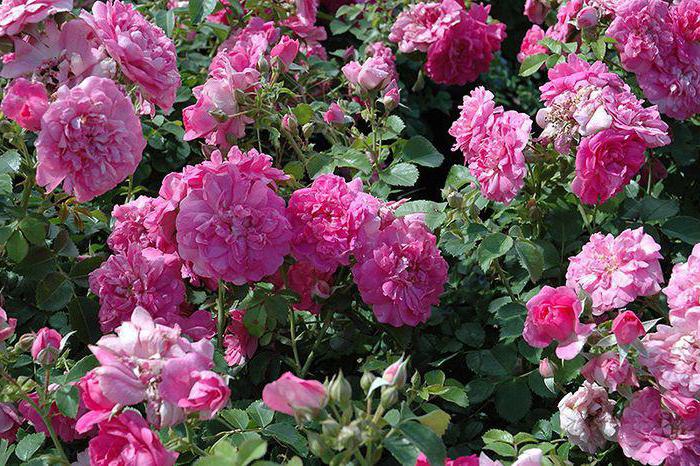

Reproduction of roses
Canadian roses are propagated in three ways: lateral layering, bush division and cuttings.
Side layering
The side branches are bent to the ground. A hole is dug nearby and the middle part of the layer is placed in it. An incision is made on the peel in advance, so that young roots subsequently form. The twigs are pinned with a wire and buried in earth. Water regularly.
If the roots have not formed before the fall, then the layers are covered for the winter. In the spring, before the buds bloom, the twig is carefully cut under the ground with a pruner, and the rooted cut is transplanted to a new place.
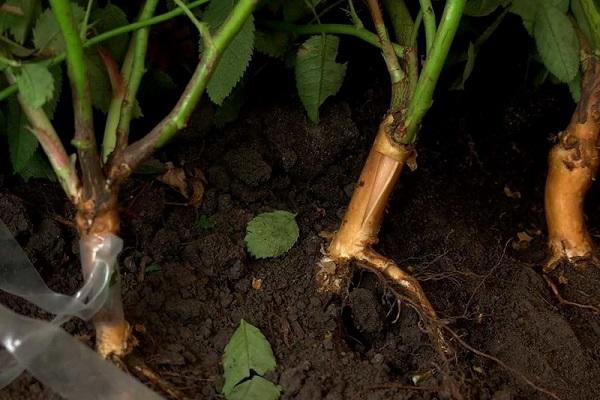

By dividing the bush
The procedure is carried out in the spring, before the onset of kidney opening. The bush is dug up, the root system is divided into several parts with a secateurs. Each part should have at least 5 branches and roots. In this position, they are planted in a new hole.
Cuttings
Cuttings are cut in the fall. The cross section of the shoot should be at least 1 centimeter. The cuttings are wrapped in peat or moss and plastic wrap. Store planting material in a refrigerator or dark cool cellar.
In the spring, you can cut the cuttings from the shoots that formed in the last year. These will be green seedlings. Each cut should have at least two buds, and the length of the branch itself should be at least 10 centimeters.
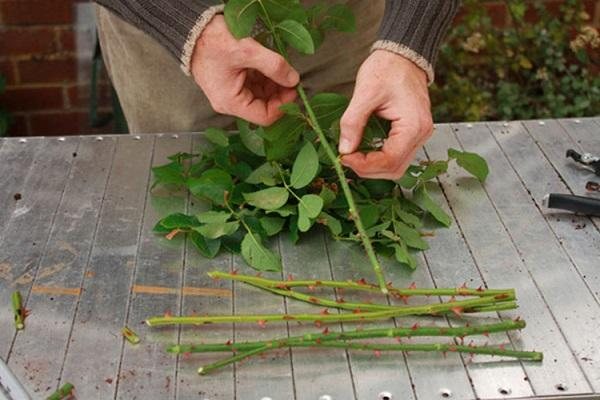

Zelentsy can be immediately planted in the ground and regularly watered with a root formation stimulator. It is recommended to keep lignified cuttings in water until roots are formed. The water is changed periodically. Only after the appearance of root hairs are they planted in the ground. Rooted cuttings take root well.
Canadian roses are not inferior in sophistication to tea hybrids, although the latter are considered the most beautiful.
"Canadians" are unpretentious in care, do not freeze in winter, and if they do freeze, then in spring they will quickly grow back and gain strength. Some of them bloom twice a season, and many do not require shelter for the winter.
Description
The flowers of the beautiful representative of the flora are crimson, semi-double. Each bud has up to 25 slightly pointed petals. The flowers reach 6 centimeters in diameter. They grow constantly, their number in a brush is from 3 to 7. Under favorable conditions, the number of flowers reaches 30. The bush is dense, always erect.
The leaves are rounded, dark green saturated color, shiny. The thorns have a yellowish tint, a light bloom is visible on them.
The rose pleases with abundant flowering throughout the season. It usually lasts from late May to September.
Important! The more sunlight enters the plant, the longer it will delight the eye with blossoming buds.
How is the landing
Canadian rose bushes can be placed anywhere in the garden, in combination with other bushes. To plant a plant, it is necessary to choose the right seedling, the condition of which depends on the further growth and flowering of the rose, as well as to prepare the soil.
Choosing the right seedling
The purchased seedling must be in excellent condition. Namely:
- the root must not be withered:
- have a couple of healthy shoots;
- it is better to buy in separate containers with a closed root system;
- the available leaves are green, not dried up.
In general, a healthy, strong seedling is best purchased from trusted rose breeders or nurseries.
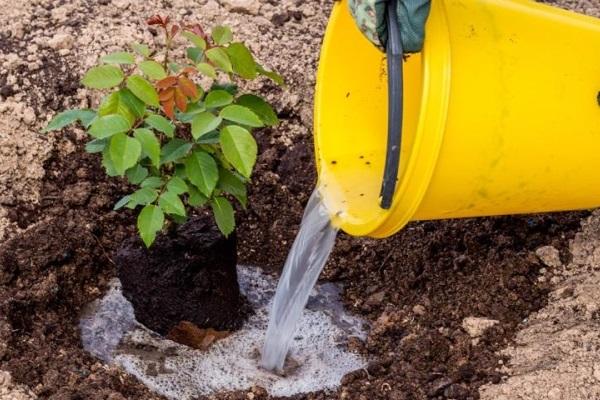

Preparing the potting mix
The place can be any, but it is better to avoid the southern side of the building and an area with an abundance of sun, since the plant does not like direct rays, and on the southern side of the house it can lose its roots. This happens due to the early melting of snow, and then freezing of the soil.
A hole for a rose is made deep - up to 70 centimeters, the same dimensions are made in diameter.A bucket of organic fertilizers is poured onto the bottom of the hole: humus, wood ash and peat. This feeding will be enough to root the roses.
Planting process
Before planting in open ground, long roots are cut off, the same is done with the shoots. Their length must be at least 20 centimeters. The seedling is lowered into the hole, the roots are carefully straightened and sprinkled with earth. It is important that the root collar is not buried in the soil. The soil around the seedling should be compacted with your feet, without touching the shoots.
The next step is to water and mulch abundantly. In this state, the roots will receive sufficient moisture.
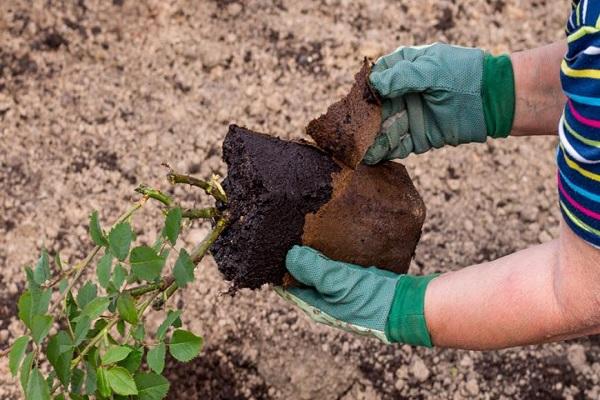

Care features
Canadian roses are not demanding to care for. It is enough for them to provide regular watering, weeding and bush formation. The rest of the rose will cope on its own, and the amount of fertilizer that you applied during planting is sufficient in the first year of the growing season.
See also
Description of varieties of purple roses, planting, growing and careRead
Watering and feeding
Throughout the spring, roses are watered abundantly to provide a supply of moisture in the summer heat. In the summer, as the bush forms, budding and flowering, watered as it dries, avoiding waterlogging. It is important to wait until the soil is completely dry.
In the fall, you do not need to water the plant, because because of this, new side shoots appear on the rose, which will still die in winter.
A complex of mineral fertilizers for Canadian roses is applied in the spring. It is enough to buy such a complex and follow the instructions. In autumn, the area under the rose bush is mulched with rotted manure and the soil is slightly loosened.
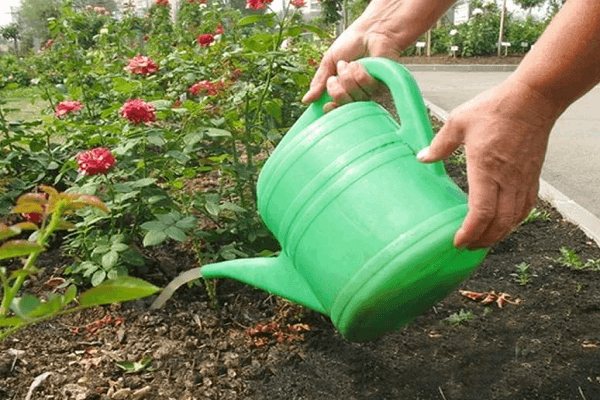

Pruning young shrubs
The main pruning is done in the spring. Broken twigs that have died during the winter are cut out. In summer, shoots, on which buds have not formed, and lateral root shoots are trimmed. This procedure will allow nutrients to flow to the flowering branches.
Pruning Canadian roses for the winter is carried out after the end of flowering. At this time, a dormant period sets in, the juice moves slowly along the stems, the plant does not form side shoots. During this period, it is important not to water or feed the roses.
Cut out shoots growing inward, three-year branches. They are not completely pruned, while leaving a few buds, so that new color branches will grow on the pruning next year. Sections must be treated with garden varnish, brilliant green or rinsed with potassium permanganate.
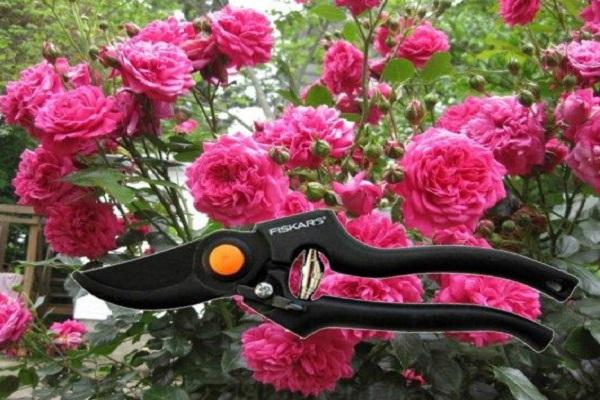

Shelter roses for the winter
In regions where winter temperatures reach below -30 degrees, shelter is required. It is difficult to accomplish this for standard plants or park roses, the crown of which is huge. Many flower growers construct a special frame that is covered with a covering material. With the onset of spring, the shelter is removed so that the rose does not rot.
Climbing roses are easier to cover. The vines are removed from the support, laid on the ground and covered with spruce branches, this will be enough so that the "Canadians" do not freeze out.
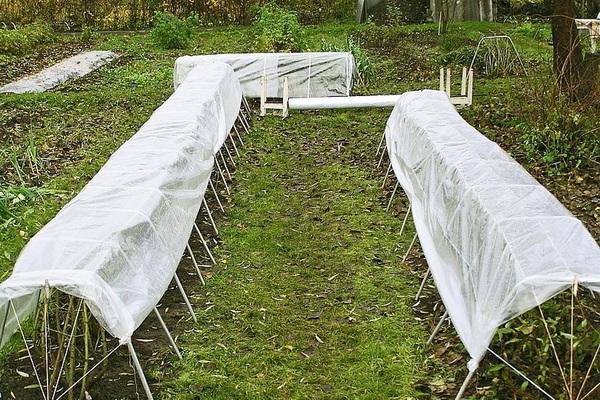

"Canadians" in the landscape
These types of plants are often grown to create decorative compositions in gardens. With their help, you can make green curbs and hedges on the site or simply plant them in the center of the flower bed.
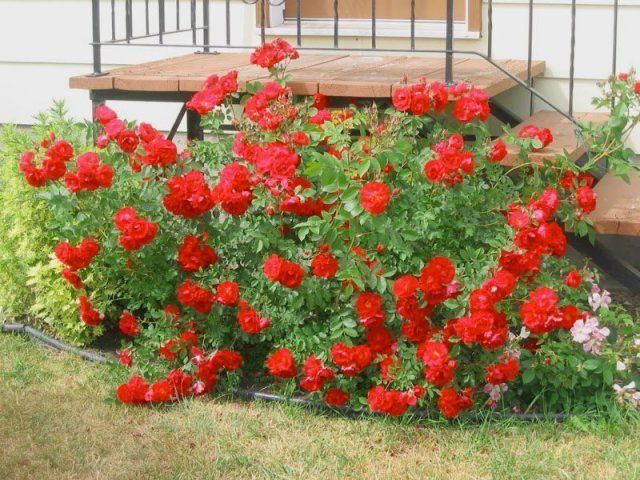

For the decoration of arches and gazebos in gardens and parks, you can use curly or climbing varieties of flowers. In addition, with their help, it is easy to create a composition of several tiers. These varieties can be combined with each other. They are easily combined for maintenance, soil type and other aspects of farming.
Combinations of decorative conifers and roses look spectacular. With their help, it is recommended to create paintings. Snow-white flowers of the Martin Frobisher variety look especially original with the needles of coniferous trees.
For the decoration of borders from different plants, it is better to bring forward bushes with bright saturated colors, for example, red, pink. It is best to form a hedge from three varieties of roses that bloom for a long time and retain their decorative appearance until frost. It could be Prairie Joy.
Growing in our country
Gardeners from their own experience prefer the Nadezhda variety, which is easily adaptable even in the most difficult climatic conditions. It does not need to be looked after carefully, but it blooms later than other Canadians.
There is evidence of a gardener who grows several varieties of these Canadian flowers in the Khanty-Mansi Autonomous Okrug. It is rather cold here in winter, but rather snowy. Additionally, the shrubs are covered with spruce branches or tops. Canadian roses not only do not freeze in such conditions, but also winter without freezing.
And many varieties of ordinary roses begin to freeze at low temperatures. Such bushes must be covered. "Canadians" are sheltered at the discretion of the owner. Usually, the bushes winter well on their own, but it is better to cover young bushes with spruce branches for the winter. Even if the bushes are frozen over in the winter cold, they will quickly recover and begin to grow back in the spring. In addition, gardeners like that flowers can bloom even in the shade. The duration of flowering continues both in the rains and when the temperature drops to the very frost. Such shrubs are less susceptible to disease and pest damage. They are not afraid of powdery mildew or black spot.
Now read:
- Effectively Get Rid of Whitefly Butterflies on Plants
- Delicate, easy-care coniferous bushes in garden plots
- Interior of your home with curly indoor flowers
- Confidentiality
About
Agronomist of the state agricultural enterprise "Garovskoye" of the Khabarovsk region of the Khabarovsk region.
A bit of history
For the first time, Canadian roses that can withstand temperatures down to -300C were obtained as a result of a long process of interspecific hybridization by breeder William Sanders at the end of the 19th century. At the beginning of the last century, Isabella Preston continued breeding work in this direction. It was she who bred about 20 varieties of frost-resistant roses and began their industrial cultivation. The basis for their creation was the local, growing on the prairies and able to withstand both long snowless dry winters and spring sudden changes in temperature, Canadian roses. The varieties obtained as a result were named appropriately: "The Virgin of the Prairie", "Dawn of the Prairie" and others.
In the second half of the 20th century, the Canadian government allocated funds for a state project to breed winter-hardy and frost-hardy perennials. Thanks to this, two research stations - Ottawa and Morden (Morden) - have developed two series, which are subdivided into modern Canadian roses. Varieties, photos, descriptions of Parkland and Explorer groups are presented in the next section of the article. In the late 1980s, government funding was discontinued. Today, only a group of enthusiasts are engaged in the development of new varieties of frost-resistant "Canadians", and their latest achievements were the roses of the Canadian Artist series, Felix Leclerc and Emily Carr, introduced to the market in 2007.
Flower propagation
The planting is easy to propagate on the site by grafting. Seed breeding is usually not used as it is labor intensive.
Attention! When using seeds for propagation, varietal qualities may not be transferred to young plants.
When is it produced
It is best to propagate a rose by cuttings in late June or early July. During this period, the shoots are well-ripened, filled with juice.
You can also cut the cuttings in the fall and store them in a cool room until spring. With the onset of warmth, they are planted in the ground.
Detailed description
The propagation procedure by cuttings is performed as follows:
- fertile soil is poured into the box;
- cuttings are cut into segments of 12-15 centimeters;
- remove the lower leaves, shorten the upper ones by half;
- cuttings are planted in moist soil;
- the box is covered with plastic wrap.
Every day, planting is aired, condensation is removed. When the cuttings take root and start growing, they are planted on the site.
Important! It is imperative to remove water droplets from the film and from the walls of the container, otherwise fungus may form on them.
How to avoid freezing shoots
"Canadian" is a number of the most winter-hardy varieties. But, sometimes even the most adapted hybrids are able to freeze slightly.
In order to protect Canadian roses from cold weather, you should take some measures:
- Make mulching the bush. Loose compost soil works well for this. For 1 bush - about 10-15 liters.
- The shoots are bent to the ground and covered with a film or special agrofibre. As soon as the first frosts appear, all buds that have not blossomed are removed.
- If the winter is snowy, you can throw snow on top of the shelter. This will provide additional protection from the cold.
- It is necessary to remove the shelter from the bushes in mid-March. If this is not done on time, there is a risk of plant decay.
By following simple instructions, you can achieve good results in growing roses. And such hybrids as the Canadian rose are capable of growing even in the coldest regions where, it would seem, this is impossible. Moreover, there are many varieties of Canadian roses, and breeders continue to work on breeding new ones. These beautiful flowers will delight with their fragrance and impeccable appearance, everyone who decided to devote their free time to them, responding to the care with a scattering of buds.

